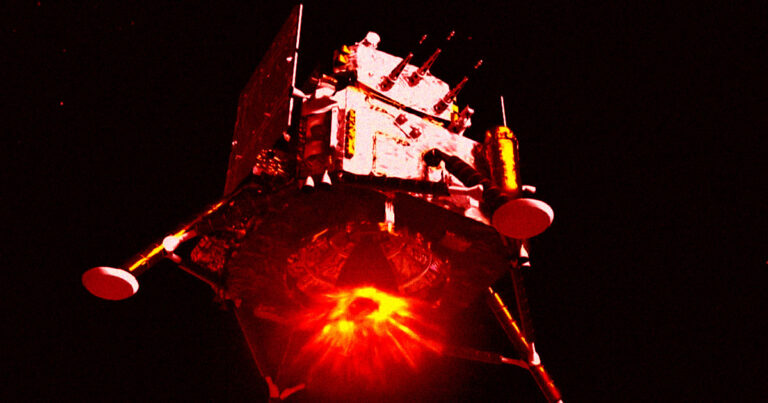Earlier this week, China’s lunar rover Chang’e-6 landed in Inner Mongolia, delivering the first samples ever collected from the far side of the moon.
The mission has excited the international scientific community: the far side of the moon, which always faces away from Earth, remains shrouded in mystery and China is the only country to have landed on its surface so far.
But one country would be prohibited from scrutinizing the extremely rare samples: the United States.
This is because the US enacted a law in 2011 called the Wolf Amendment, which prohibited NASA from using government funds to work directly with China.
The controversial bill has become a hot topic of debate, with its possible repeal becoming a “political ball tossed between hawks who want to portray China as a new adversary in space and less combative supporters who want to use China’s rapid rise in the field to U.S. advantage.” Scientific American Written in 2021.
“The Wolf Amendment remains the source of obstacles for U.S.-China aerospace cooperation,” Bian Zhigang, vice president of the China National Space Administration, was reported as telling reporters this week. Associated Press“If the United States truly wants to begin regular aerospace cooperation, I think it should take appropriate steps to remove obstacles.”
Chinese officials announced today that the country’s Chang’e-6 rover has returned just under two kilograms of material from the far side of the moon. While it’s far from the largest sample ever returned from the moon (NASA’s Apollo 16 mission returned a massive 26 pounds of rock in 1972), it is the first sample ever taken from the far side of the moon.
The far side’s surface is rocky and cratered, making it an incredibly difficult environment to explore, and its unique features have long puzzled scientists.
China’s groundbreaking Chang’e-6 mission may finally provide some answers. First, samples may shed light on what types of local resources, such as water ice, are available to future space explorers.
China has collaborated with many countries on the Chang’e-6 mission, but the Wolf Amendment means the United States likely won’t be involved when scientists analyze samples in the lab.
However, this does not mean that China is not open to the idea.
“China welcomes scientists from all countries to apply according to procedures and enjoy the benefits,” Liu Yunfeng, director of the international cooperation department of the China National Space Administration, told reporters.
The Wolf Amendment, named after former U.S. Congressman Frank Wolf, prohibits NASA from using government funds to collaborate with the Chinese government. Unless The company has been certified by the FBI that its collaboration does not pose a threat to national security or inadvertently expose space-related technology or data.
The move is designed to pressure China to improve its human rights record, a welcome change that experts say has been lacking in the past 13 years.
If anything, China has made considerable progress, with its space agency having sent multiple rovers to the moon’s surface during that time and launched its own space station less than two years ago.
But there’s still a slim chance that NASA could help China study samples from the far side of the moon: In a rare instance of U.S.-China cooperation, last year NASA invited scientists to apply to study samples that China’s Chang’e-5 mission would return to the near side of the moon in 2020.
At the time, the space agency said it had submitted the necessary certifications to Congress to prove there was no risk of technology or data being transferred to China.
China is currently in a strong negotiating position, having successfully completed nearly six lunar missions in recent years, far surpassing NASA’s efforts. The National Aeronautics and Space Administration’s last lunar mission was more than half a century ago, and there’s still a long way to go to change that.
More about Chang’e 6: Chinese spacecraft lands on Earth with first samples from the far side of the moon

